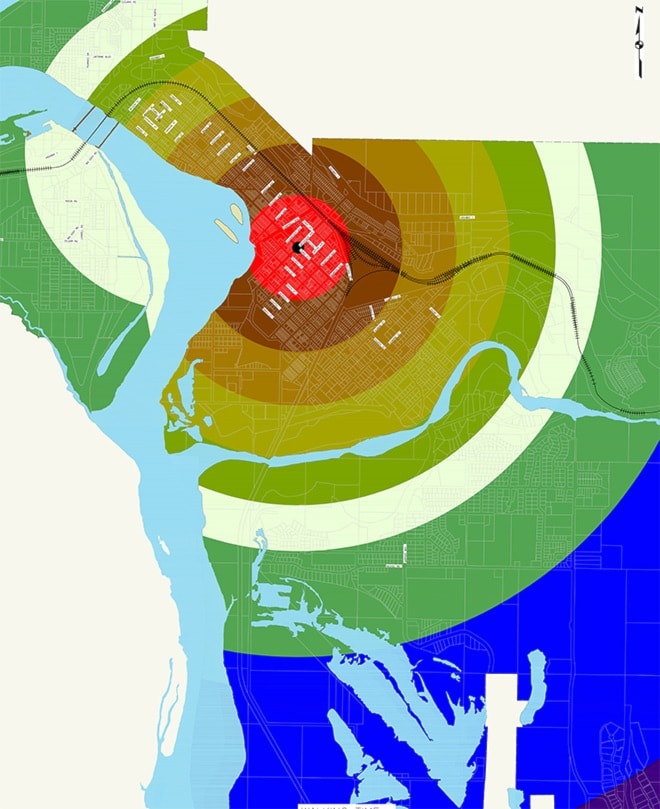Ever been up for a job review? When they start out by listing positives through forced smiles, you know it’s going to be a bad one.
The City of Revelstoke’s engineering and development services director Mike Thomas has delivered his analysis on the city’s draft Master Transportation Plan.
Although Thomas’s wording is more polite, the report more-or-less says the transportation plan is a costly, pie-in-the-sky plan based on unrealistic population increase forecasts, and that the plan had limited stakeholder input.
Thomas’s Jan. 20 report to council summarizes his review of the Boulevard Transportation Group plan, which was begun in 2009 and received by city council in September, 2012.
It points out a few positives – like mapping work, alternative transportation planning, and some projects already in development stages – but the main thrust is criticism.
It says the 25-year population projection of 19,250 is higher than the official community plan projection of 16,380. The 50-year projection was set at 27,250, or almost four times the current Revelstoke population.
“As a result, many of the projects identified as priorities are considered ambitious in the current economic and growth situation,” Thomas writes.
A transportation network for a town four times the size of Revelstoke is costly. Thomas points out the cost for projects listed as ‘high priority’ ranges between $15–$40 million, and would tag on hundreds of thousands in annual operating and maintenance costs.
The cost for all the projects in the plan is much more: “The total costs including the low priority projects are estimated to be up to $100,000,000 in capital and $700,000 in annual operating and maintenance costs.”
The review said public input and engagement wasn’t sufficient: “Stakeholder/public input into the capital projects identified in the DRAFT Master Transportation Plan was limited, and only involved those in attendance at the stakeholder meeting second public open house who completed surveys.”
Thomas makes two recommendations to council.
He advises council update the Transportation Master Plan then shelve it as a reference document. He recommends “updating population projections, traffic data and project priorities for including in the consideration of the 2015–2019 Financial Plan.”
His second recommendation is to fold the transportation plan into the city’s “asset management system.”
This is an important new distinction. Since arriving at city hall, Thomas has several times discussed the city’s need to develop a system for managing its existing assets, and for factoring in long-term, life-cycle costs into city decision making. Thomas is set to unveil his new asset management system at council’s Jan. 28 meeting.
Thomas’s analysis of the draft transportation plan criticizes the transportation plan for not factoring in upkeep of the existing transportation network.
“The projects identified in the plan and estimated costs in this report do not include repair and rehabilitation of the existing transportation assets necessary to address the infrastructure deficit within the city,” Thomas writes. “These infrastructure needs and associated costs will be addressed in the city’s asset management plan.”
So, what transportation improvements are in the works right now?
The 2014–2018 draft budget lists three major projects, in addition to an average of about $220,000 annually for road patching and paving.
The intersection at Fourth Street and Townley is allocated $460,000 in improvements between 2015–2017.
The intersection network at the Trans-Canada Highway and Victoria Road is budgeted for $600,000 in design work between 2014–2016.
Pedestrian safety and mobility improvements in Arrow Heights are budgeted for $126,000 in 2014.
A “mill and fill” project on Victoria Road is budgeted for $200,000 between 2014–2015.
The current draft budget also lists several big-ticket road improvements in Lower Town.
